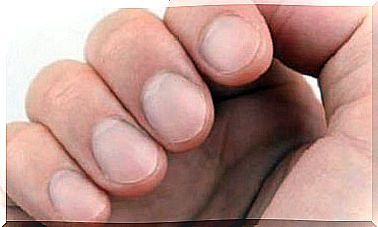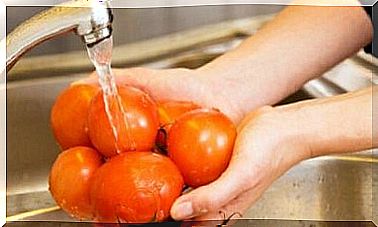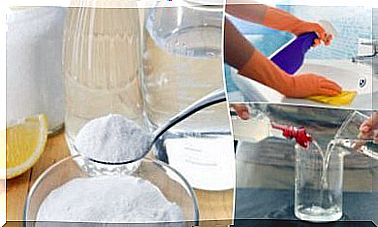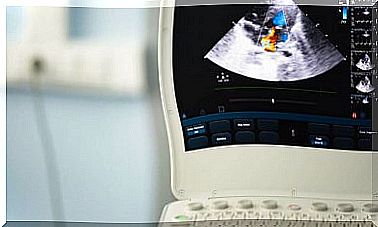Steam And Hot Water Burns: Treatments And Recommendations
Contact with steam and hot water can cause burns of varying degrees. When to consult a doctor ? What to do to avoid complications? In this space, we detail it.

Steam and hot water burns, or scalds, are one of the most common accidents in the home. At first glance, they don’t seem to affect the tissue much; however, they can cause serious damage. For this reason, knowing your treatment is essential.
When you think of burns, the first thing that comes to your mind is those produced by fire. But, as the Centers for Disease Control and Prevention (CDC) says, of all patients hospitalized for these injuries in the United States, between 33% and 58% are the result of water burns.
Generally speaking, there are different types of burns depending on their depth. In this sense, they can range from the first to the third degree, the latter being the most severe level and where deep tissues such as muscles and nerves can be affected.
How do steam and hot water burns occur?
Most scalds occur in the home during certain daily tasks. When water reaches its boiling point, it turns into vapor. In this process, the particles become smaller, but maintain a temperature around 100 ° C.
Therefore, hot water and steam are capable of causing very serious burns. In fact, according to the Spanish Pediatric Association, hot water at 60 ° C can cause a third degree burn in a child, in just 3 seconds.
Burns often occur while cooking food. In particular, they occur when handling everyday objects such as kettles, steamers or pressure cookers.
Since when water turns to vapor it expands the area it occupies, it usually comes out with some pressure from the container that contains it. As a result, the damage generated on the tissues increases.
The CDC details that the areas of the body most affected by scalds are the arms and hands with an incidence of 42%, while in second place are the feet and legs. This is related to the mechanism of appearance, as they can be generated by the spillage of hot liquids.
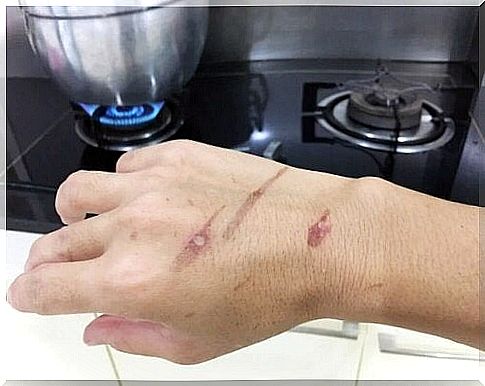
Symptoms of steam and hot water burns
The symptoms generated by this type of burns can vary depending on the depth of the burn. Either way, there will be pain or burning in the affected area. This is because there will be direct damage to the fabric that has come into contact with water or steam.
When you are in the presence of a first degree burn, in addition to the corresponding burn, there will be only redness of the affected area and possible swelling. In these cases, only the surface layer of the skin is affected, so the damage will be minimal.
On the other hand, if hot water or steam has caused a second degree burn, blisters or sores will appear on the affected area. This is because heat penetrated the deeper layers of the skin and their separation occurred as a defense mechanism of the body.
Finally, in third degree burns, you may see blisters. But also areas where deep tissues are exposed. In addition, there may be functional limitation of the affected area due to damage to nerve fibers.
First aid for steam and hot water burns
Due to the frequency of steam and hot water burns, it is imperative to know first aid and what to do when it occurs. Taking the appropriate measures immediately can limit the damage suffered and avoid complications. What should be kept in mind?
Move the person away from the heat source
The first thing to do with any type of burn is to remove the person from the heat source and put him in a safe place . This will prevent areas that are not yet affected from being injured.
Cool the wound and remove any clothing that comes in contact
Once the person is safe, the wound should be cooled. To do this, it is best to immerse the affected area in lukewarm water for 20 minutes. This will cool the tissue and prevent the burn from progressing. Under no circumstances should ice be applied, as the cold can cause more damage.
After cooling the wound, any clothing or jewelry in contact with the affected area should be removed. In this case, it is usually better to cut the garment to avoid damage . If for some reason the clothes stick to the skin, they should not be removed.
Cover the affected area
After removing all clothing, it is advisable to moisten a sterile gauze or cloth and cover the affected area. If the burned area is not very large, a bandage that does not compress the limb too much can be made. The goal is to offer more protection and avoid infections.
At this point, if the pain is severe, pain relievers such as acetaminophen or ibuprofen may be used. The goal will be to decrease the pain. When it comes to extensive burns, body temperature may drop. For this reason, you should try to keep it within normal values.
Do not burst blisters or apply substances to the burn
In any case, the blisters that appear should not burst. This procedure should only be performed by medical personnel if necessary. By draining the blisters, the risk of infection and injury is high.
On the other hand, it is not advisable to apply toothpaste, coffee, butter or any other substance on the affected area. Any external substance can also promote bacterial infection. The use of creams and ointments should be done under strict medical supervision.
When to go to a doctor?
In most cases, steam and hot water burns are first or second degree, so medical assistance is usually not needed. In these cases, following the recommendations mentioned above is sufficient for successful recovery.
However, you should see a doctor immediately if the affected area is very large or if it is a third degree burn. These burns are serious, especially in children, and can be life-threatening.
Other situations in which you should see a doctor for burns are as follows:
- Increased pain, redness, or swelling.
- Fever above 38 ° C
- Presence of purulent fluid in the wound.
- Difficult healing.
- If the eyes or respiratory tract are affected.
Various studies show that between 30% and 40% of patients with burns are under 15 years old. In these cases, it is always advisable to call the emergency service. Indeed, children tend to be less resistant to this type of injury and may be more affected than an adult.
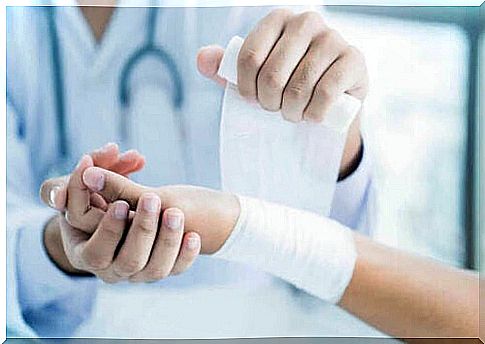
Be careful with children
Unfortunately, children are among the most affected by steam and hot water burns. This may be due to their curious nature. In this sense, it is extremely important to keep them out of the kitchen, especially while cooking food. This simple act can prevent a large number of accidents.
In addition, care should be taken when bathing children, and that the water temperature does not exceed 37 ° C. It is important to remember that children’s skin is much more sensitive and that they are subject to serious injury, even during a short period of exposure.


